My feet crunched on the lava path as I scanned the trail ahead. Just minutes ago, someone had asked me in the parking lot if there was anything to see here. How do you answer a question like that?
I was visiting Hawai’i Volcanoes National Park, and I suggested he check hiking trails, lava flows, another scenic drive. I didn’t mention the goose.
I was on this trail looking for the goose. Despite lots of interpretive displays about this species, it didn’t look like many other tourists were that enthralled with the Hawaiian goose, better known as the nēnē. They should have been.
It took us only a few minutes of looking to spot the nēnēs in the national park, and were able to watch them from just a short distance away.
The nēnē is not just any goose. It’s one of the most endangered waterfowl species on the planet, if waterfowl is the correct term for a bird species you’re more likely to find on a lava flow than a wetland. It’s also, to my eye, one of the most attractive of the waterfowl species. It’s a goose found on the Hawaiian islands and nowhere else.
It almost disappeared but now it’s common enough that you can see it at a number of popular tourist spots on the main Hawaiian islands. Here’s the story of the nēnē.
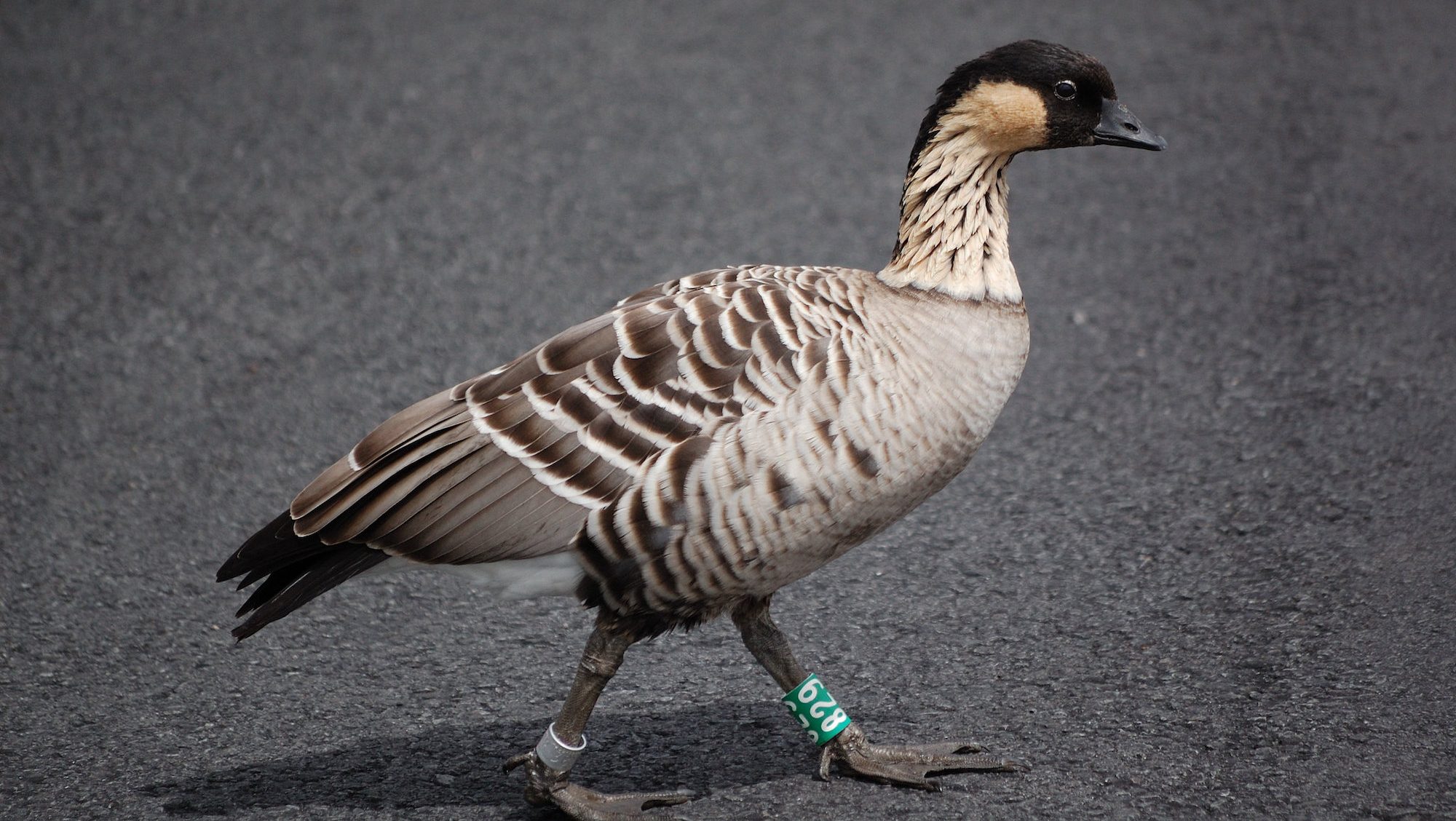
Meet Hawai’i’s Goose
An estimated 500,000 years ago, a flock of Canada geese landed on the Hawaiian islands. They were likely blown way off course, as can happen with migratory birds. Finding a hospitable environment with plenty of food and no mammalian predators, they stayed, thrived and evolved.
According to the National Park Service, at least 7 species of geese evolved on the islands, most of them large and flightless. When Polynesians settled the islands, they hunted the geese, and brought along dogs and rats. As is so often the case with island birds, the Hawaiian geese were ill adapted to these changes. All went extinct except the smallest species, the nēnē.
The nēnē continued to thrive, for a time.
The nēnē is a small goose, with attractive striping on its neck and a blackish face and black feet. As Gary Kramer notes in his book Waterfowl of the World, “Nēnē differ from other true geese by having longer legs, a more erect posture and a reduced webbing between their toes, adaptations to aid this terrestrial species in walking on land.”
Perhaps less scientifically, but no less accurate, my 8-year-old son calls them the “cutest goose.”
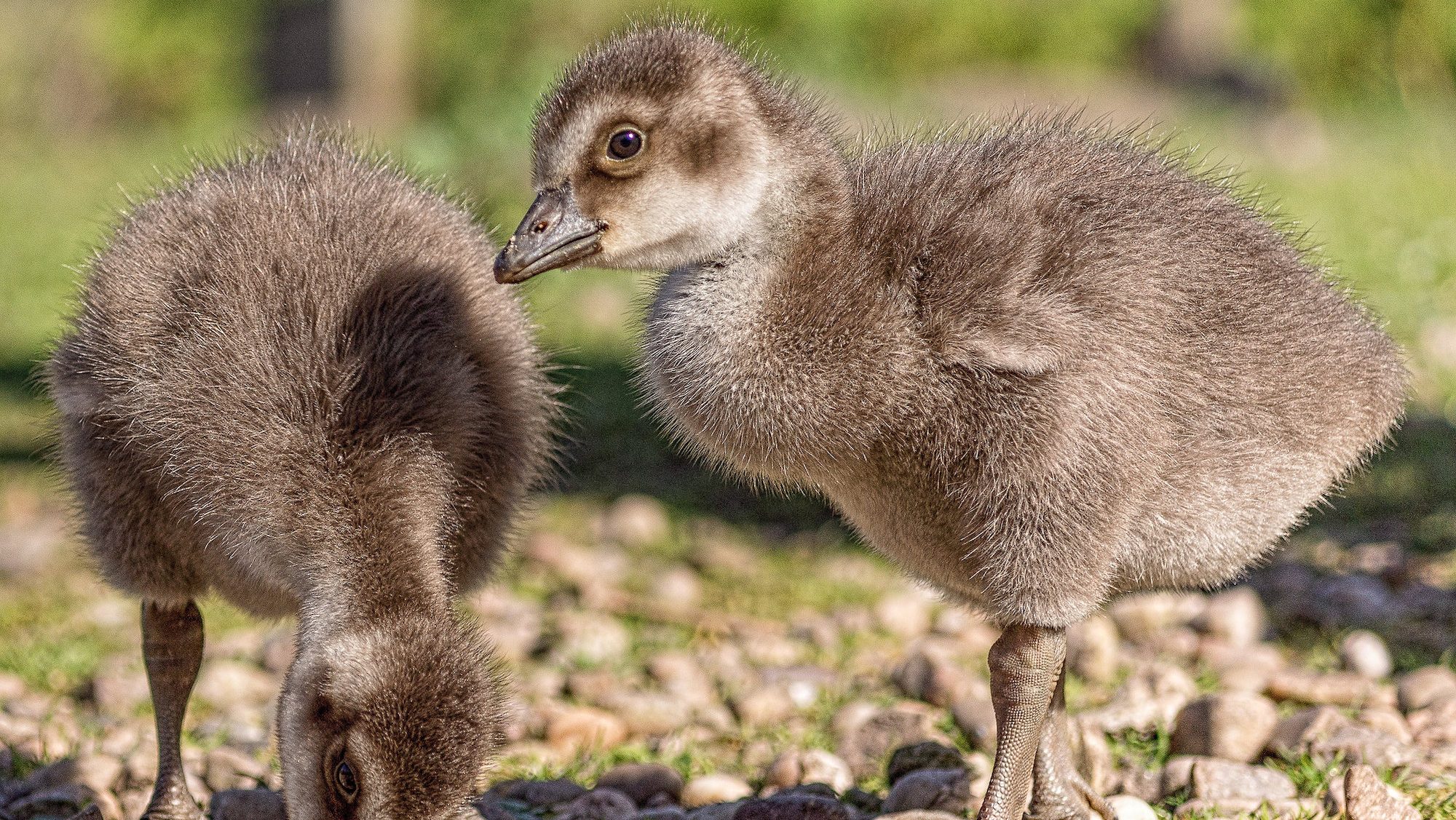
Conservationists have long recognized the long migrations undertaken by many duck and goose species. The nēnē has no need to embark on long migrations. However, the goose will move to higher or lower elevations, and can live in open habitats from sea level to nearly 8,000 feet. They nest in rugged, vegetated lava, certainly one of the more unusual places that waterfowl hatch young.
As many as 25,000 nēnē may have been on the Hawaiian islands in the 1700s. That changed rapidly with European colonization. Europeans made massive changes to the habitat, including clearing vegetation for planation-style agriculture. This habitat fragmentation negatively impacted the nēnē’s needs throughout the year. Europeans also introduced, often on purpose, more predators including pigs, cats and, most devastating of all, mongoose.
By 1900, the nēnē was gone from every Hawaiian island except the “Big Island” of Hawai’i. By 1950, only around 30 of the birds remained, making it the most endangered waterfowl species on the planet.
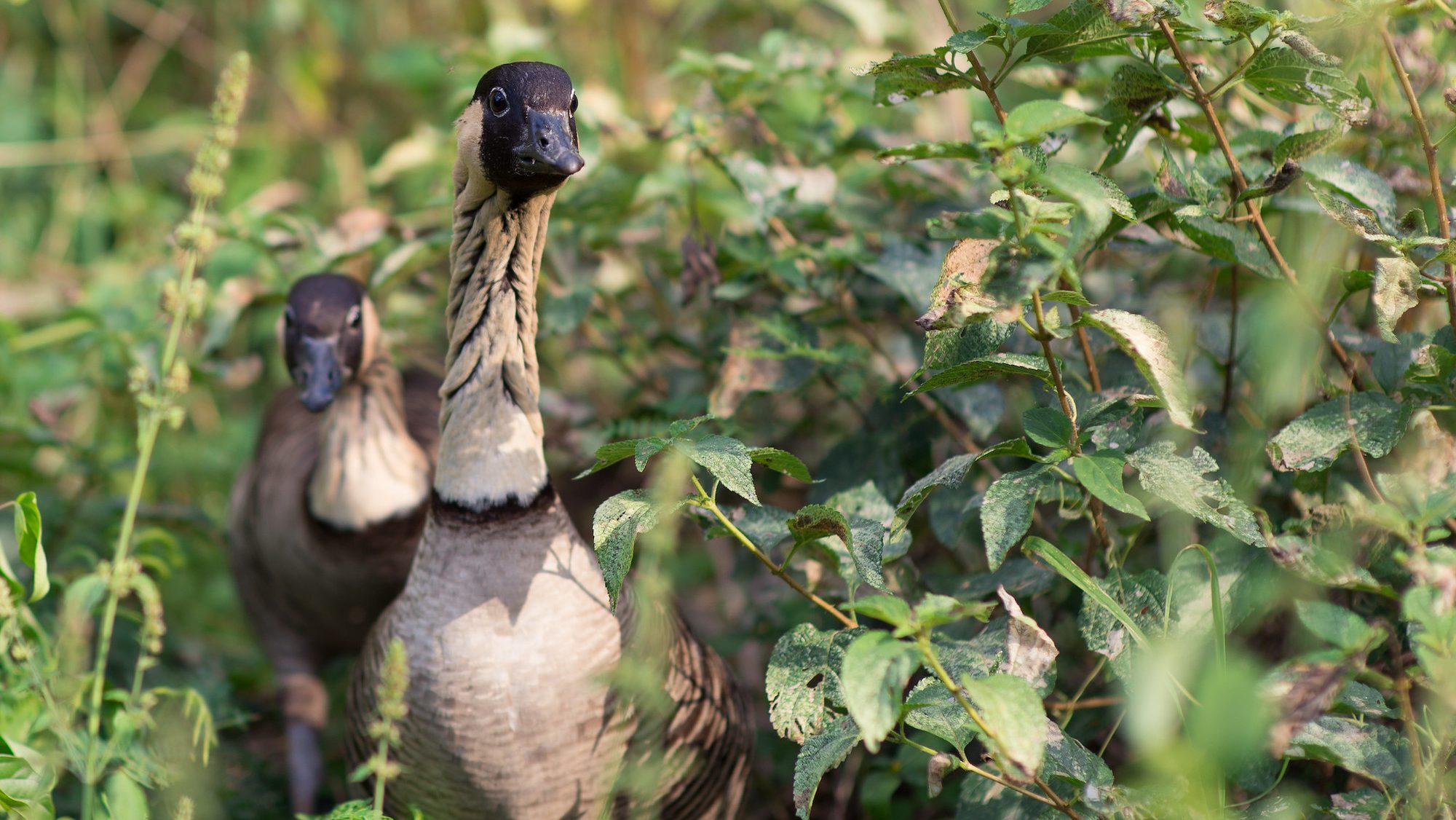
The Recovery
When there are so few individuals of a species, recovery can seem a daunting task. The nēnē was aided by the passage of the Endangered Species Act (it was listed as endangered in 1967). It was also aided by the fact that breeding wild waterfowl in aviaries is an established hobby around the globe. Private aviarists had the know-how, and often the facilities, to raise a variety of waterfowl species.
Captive breeding programs provided nēnē to be reintroduced back to their native habitats. As the U.S. Fish and Wildlife Service (USFWS) notes, between 1967 and 1990, more than 2,000 nēnē were reintroduced to several Hawaiian islands. However, as the USFWS puts it, “Reintroduction efforts were met with mixed results. Introduced predators, especially mongoose killed many of the newly released nēnē and their offspring.”
In the 1980s, Hawai’i Volcanoes National Park biologists recognized reintroduction was not enough, and undertook a variety of efforts to ensure the geese survived: predator control, removal of non-native hoofed mammals, and habitat improvement.
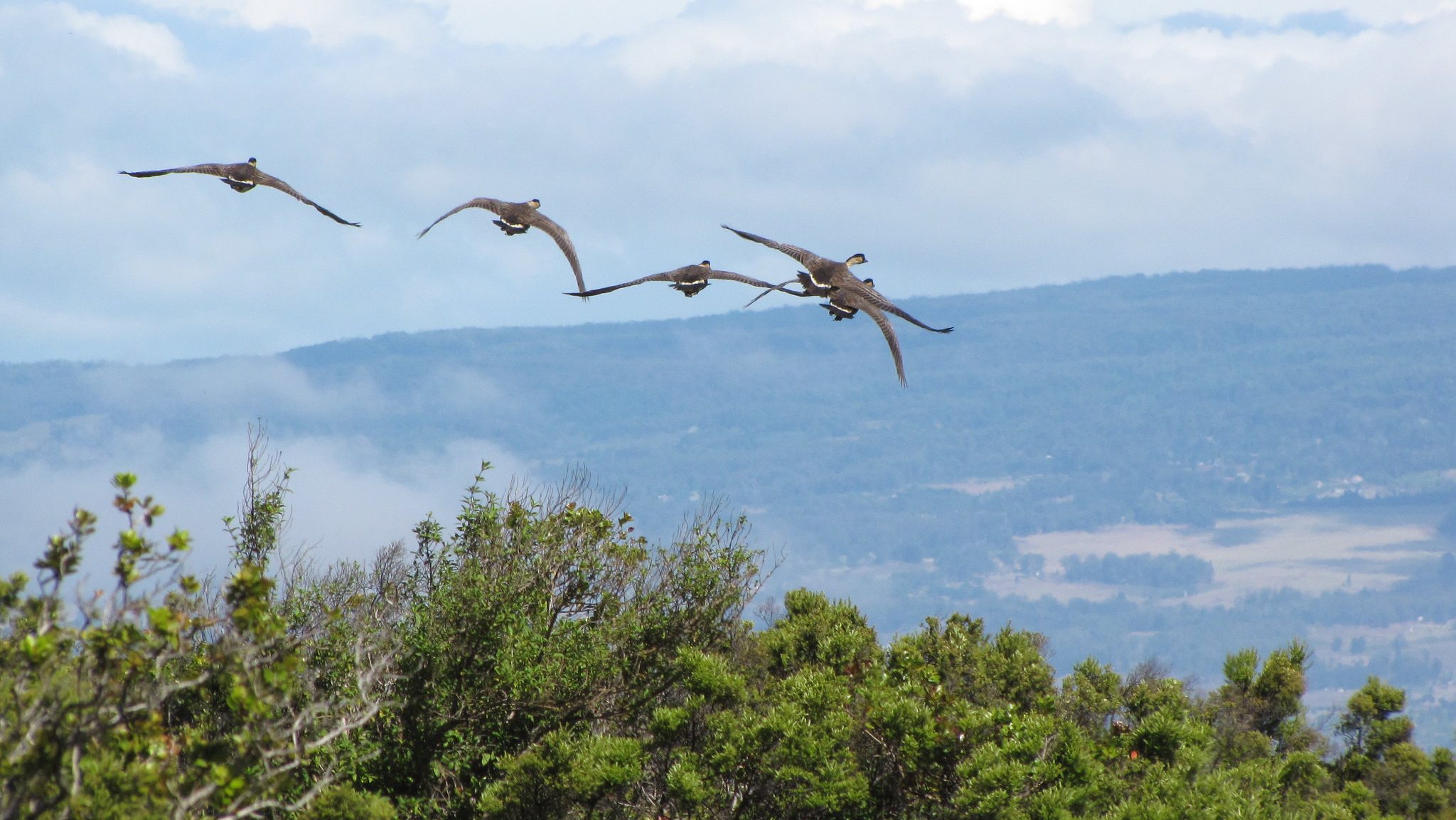
Another decision had arguably even greater success: establishing nēnē populations on Kaua’i in 1991. At the time, there was an argument as to whether the nēnē was even native to Kaua’i. Then an excavation at Makauwahi Cave Reserve on the island (a site well worth visiting, by the way) revealed nēnē bones.
Nene reintroduction could proceed on Kaua’i, with the first birds freed at Kīlauea Point National Wildlife Refuge. Kaua’i was particularly attractive as a reintroduction site because of what it lacked: the mongoose. Without this invasive nest predator, the nene thrived, and today the USFWS estimates 60 percent of all wild nēnēs live on Kaua’i.
Today, there are some 3,200 nēnē in the wild. By almost any measure, it’s a stunning conservation success. The threats of habitat fragmentation and invasive predators are omnipresent, so the birds need constant attention from conservationists and wildlife managers. Most of the birds you will see will be banded.
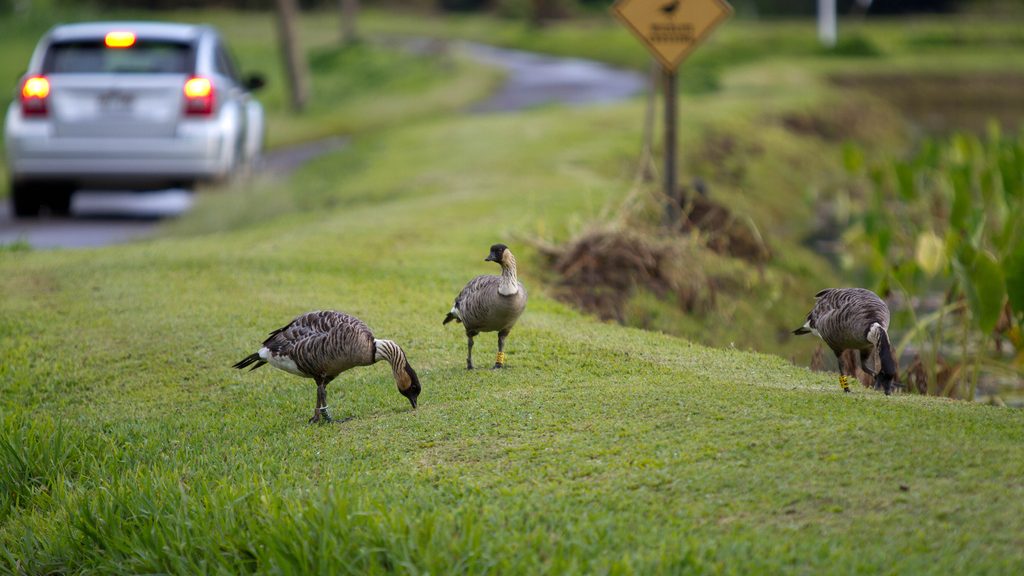
Where to See a Nēnē
The nēnē is Hawai’i’s state bird and this goose and other native birds are culturally important to indigenous Hawaiians. There has also been an effort by conservationists to share appreciation for the nene, with lots of interpretive signs as well as plenty of nene souvenirs. I’ll admit we came home with a nene stuffy and model kit.
Still, many people – like the visitor I encountered at the start of my hike – seem to hurry on by the birds in favor of the beach. If you’re a naturalist, you owe it to yourself to spend some time seeking out Hawai’i’s native birds. And the nēnē is arguably the easiest to find.
Currently, there are populations on Hawai’i, Kaua’i, Maui and Molokai.
Like its ancestor, the Canada goose, the nēnē can often be spotted on golf courses and grassy parks (and there is no shortage of either on the Hawaiian islands). Even better, spot them in one of the two key locations in their recovery Hawaii Volcanoes National Park and Kīlauea Point NWR.
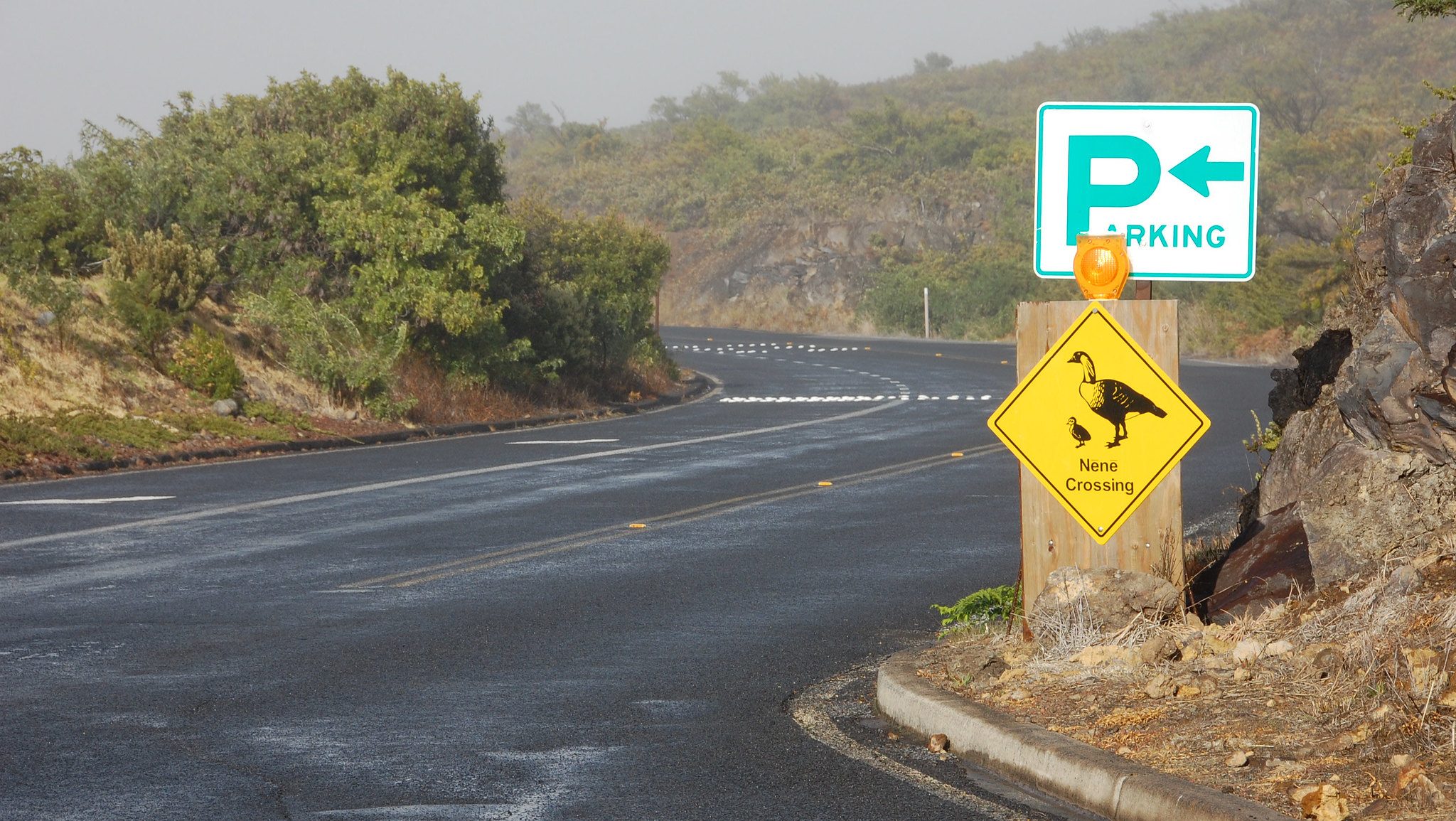
Hawaii Volcanoes recently made the news for its lava flows. It’s also a great birding location. Seeing the endemic forest birds is fun but challenging. For the nēnē, you can often see them in open lava areas, particularly along the Crater Rim Trail and the main drive that parallels it.
Kīlauea Point NWR, on Kaua’i, requires a ticketed entry. Weirdly (to me), many visitors flock to this spot for the lighthouse and the stellar views. But the real attraction should be the birds. It’s prime habitat for wedge-tailed shearwaters, red-footed boobies, tropicbirds and Laysan albatross. And plenty of nēnē.
Please be a responsible wildlife tourist. Do not feed the geese. It acclimates them to people, so that they start hanging out in parking lots and along roads. This in turn can get them killed in traffic, still a mortality issue for the goose.
To that point, drive slowly and pay attention in nēnē country. You will see the roadside Nene Crossing signs (a magnet of one is now on my refrigerator).
Just observe from a distance and enjoy the sight of one of the rarest waterfowl species on earth, one that was nearly lost forever.




You can see some thriving nēnēs at Slimbridge Wetland Centre in South-West England. Sir Peter Scott took on an incredible mission some 40 years ago to successfully breed the nēnēs and help save them from extinction. He released the first set of 200 birds back on the island of Maui in 1979 and his efforts continue today. It is worth noting that the wild population still relies on regular releases of captive-bred birds. We also know that the only way to achieve this is to save, restore and protect their wetland homes, given that their natural grassland habitat has almost disappeared.
https://www.wwt.org.uk/wetland-centres/slimbridge/news/nene-goslings-in-mission-possible
https://www.wwt.org.uk/news-and-stories/news/nene-nest-special
This just makes me so happy 😀. This is a success of spiritual magnitude.. joyful. Frank Talmadge
Great article! They are also tamer than Canada geese. I noticed this at the Buffalo zoo.
Keep up the good work. Also, how about the Laysan duck? I believethey were down to one clutch in the “wild” at one point.
Have a great day…